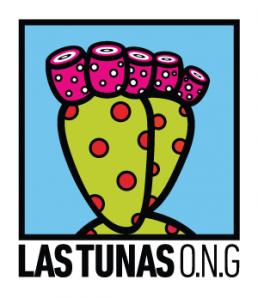The neighborhood and its people
Why in Las Tunas?
In 2002 we chose to work in Las Tunas because of its history and its people, and because it is a small sample of our country. Las Tunas is a neighbourhood with a strong identity, social capital, and working people who want to get ahead.
Many children who came here when we first started are still participating in our educational programs. They’re university students, musicians, teachers… They are writing their own stories and planning exciting futures.
From the very first day we fully trusted their desire to progress and develop their initiative, and we are now seeing them flourish.
We grew up with them, strengthening our neighbourhood presence and our identity.
Today we know that the challenge is still great. Many years of backwardness and mistakes that must be reversed concerning economics, access to health, safety, and education. We know that living in an adverse context reduces the space we have to reflect and decide.
And we work to expand that space where our freedom is born. We also recognize that as individuals, we have a common destiny. We are part of a greater whole that unites us.
And we believe that a society where we are all protagonists of our lives.
HOW YOU CAN HELP US…
We believe that a society where we are all protagonists of our lives and citizen life is possible.
We know that living in an adverse context reduces the space we have to reflect and decide. And we work to expand that space where our freedom is born.
We recognize that, as individuals, we have a common destiny. We are part of a greater whole that unites us.
LAS TUNAS, A NEIGHBORHOOD THAT IS THE REFLECTION OF A COUNTRY
About the neighborhood of Las Tunas
The Las Tunas neighborhood is located in General Pacheco, Municipality of Tigre, Province of Buenos Aires. It was founded in the mid 1950s.
Initially, many workers bought their land in installments, tempted by the proximity to companies that offered work.
The different crises that Argentina went through are reflected in the coexistence of nicely built houses, with more than 3000 very precarious ones.
The neighborhood has an area of 109 blocks where at least 42,000 people live.
Most of the streets are paved, they still do not have sewers, and water from the supply network arrived only in 2011, although it still does not reach all the homes. The neighborhood is crossed by the Las Tunas Stream, formerly a place of fishing and recreation, which is now highly polluted.
As of the late 90s, many private neighborhoods were built in neighboring lands, which today surround the perimeter of Las Tunas, and challenge us to create bridges between neighbors and between neighborhoods that occupy the same territory.
Las Tunas has a strong identity, social capital, and working people with the desire to get ahead.
About the current situation in Argentina
The suburbs of Buenos Aires are the region with the highest child poverty in the country: 72.7%
In the 15 to 29 age group, poverty reaches 51.7% – 5.5 million people.
(Source: INDEC)
27.8% of children between 4 and 12 years old and 9.2% of young people between 13 and 17 years old do not have an internet connection.
49.8% of children between 4 and 12 years old and 11.9% of young people between 13 and 17 years old do not have a mobile phone.
(Source: INDEC)
In the first quarter of 2017, unemployed youth were around 660 thousand in the national total.
The unemployment rate for people between 16 and 24 years old was 25%, this is 3.7 times more than adults.
Young unemployed are 40% of the total unemployed.
In the country there are 2.6 million young people with social and work problems, representing almost 42% of the total.
(Source: Ministry of Labor and Production)
55% of students who start high school do not finish it.
(Source: UNICEF)
Of those who finish, more than 60% do not know how to solve a simple mathematical equation.
(Source: Diario La Nación – March 24, 2019)
Only 60.7% of freshmen in the secondary level reach the last year in the expected time.
(Source: Infobae – “Every 8 minutes an Argentine student repeats or leaves high school – April 10, 2018)
The national adolescent fertility rate per thousand girls aged 15 to 19 is 65. It is higher than the average for the Latin American region.
(Source: UNICEF)
If compared to 2010, the number of young people who once used cocaine tripled.
The initiation in consumption, which used to be at 16, is today at 14 and a half.
(Source: Sedronar)
